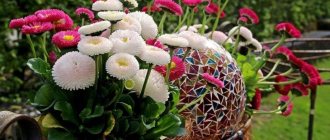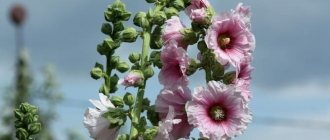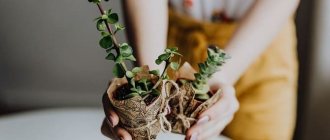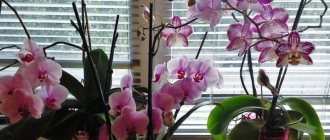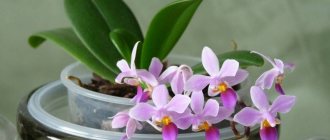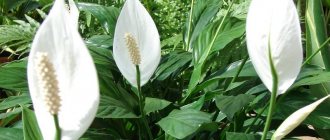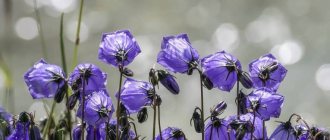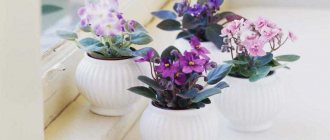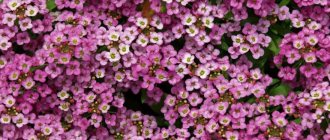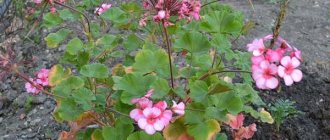Ecology
Flowers have always been one of the symbols of love. If someone is sick, they give him flowers. If someone is courting a woman, he presents her with a bouquet of flowers. If you are trying to apologize for something, you send flowers as a plea for forgiveness. When someone dies, flowers are presented to the deceased. Flowers are an integral part of various rituals in almost all cultures. It is important to know what flowers can be given and in what situations. The flowers listed below should not be touched at all. Find out more about very beautiful but poisonous flowers.
1) Aconite
© virginijavaidakaviciene
This plant is sometimes also called fighter, devil's helmet
or
Blue Rocket
.
The beautifully flowering plant belongs to the Ranunculaceae
and is most often found in the Northern Hemisphere. How dangerous is this flower? Arrowheads were made from some types of flowers of the family of fighters. They were used by many cultures for hunting and during wars. If the poison of this flower enters the stomach, it causes nausea, diarrhea, and vomiting. This may be followed by burning, tingling, and numbness of the face, mouth, and abdomen. At large doses, death occurs instantly.
2) Belladonna
© arenysam/Getty Images
This flower has many other names, for example, it is called Krasukha, Sleepy stupor
, or
Crazy Berry
, and he’s not to be trifled with.
The plant belongs to the nightshade
and is native to Europe, North America and Western Asia. All parts of the plant are toxic. If you eat the flower you will be in great danger. Children are often attracted to their berries because they look edible and even taste sweet. In case of poisoning, the following symptoms may be observed: dilated pupils, blurred vision, imbalance, headache, itching, facial flushing, slurred speech, confusion, hallucinations, delirium, convulsions. Death can occur if the body's reflex functions, such as breathing and sweating, are impaired and help is not provided in time.
Brugmansia - fragrant Angel's trumpets
1 vote
Hello, dear friends!
Are there many indoor plant lovers among us?
Just 10 years ago, home greenhouses were limited to Decembrist, geranium, aloe, Kalanchoe, birch, ivy, begonia and spreading asparagus.
Today the situation has changed radically. Flower shops are filled with amazing exotic plants brought from all over the world.
Among them there are crumbs that fit into the tiniest pot, and there are real giants that require a lot of free space for active growth.
Our today's heroine, Brugmansia, is one of these giants - a beautiful and unusual flower with a festive look and a sunny appearance.
What do the trumpets of angels sing about?
Brugmansia truly amazes with its beauty! Flowers are almost always warm colors with a graceful curve and romantic drooping.
And although she, unlike her tropical compatriot, Peristeria tall, does not imitate pretty birds, they can easily copy the bell of a viola and look great at the same time:
- The main charm of this tropical plant is its unusual shape and abundance of flowers, which resemble a brass band. By the way, it is precisely because of the unusual shape of the flowers that this plant is often called Angel Trumpets.
- The length of the buds is from 20 to 30 centimeters. Their magical aroma is impossible not to notice! During the day, the flowers smell lightly and unobtrusively, but towards evening the smell emitted by miniature gramophones intensifies significantly and even changes slightly.
- Brugmansia is a tree-like plant. Its stems are covered with gray-brown bark and are quite thick and fleshy. The tree can reach 2-4 meters in height, but most often there are individuals of medium height - 1.5 meters.
- The leaves of the plant are large, oval-shaped, pointed towards the tip. On the outside they are covered with light fluff.
- The most common types of Brugmansia are Tree and Snow White. The differences between them are not too noticeable for amateur florists, so I will not go into details of the botanical description of each of them.
- The root system of the plant is very well developed, so it is advisable to grow Angel Trumpets either in open ground or in a spacious container.
Unfortunately, Brugmansia is quite rare in the wild; some species are generally considered to have disappeared from their natural habitat.
The plant's homeland is considered to be South America - the tropics and subtropics of Chile, Bolivia, Argentina, Brazil, and Ecuador.
The flower owes its extraordinary name to the Dutch botanist Sebald Justinus Brugmans.
Sultry tropics on your windowsill
Growing a tropical beauty in your garden is not as difficult as it might seem at first glance.
If you take a healthy cutting from your friends and properly season it with care and quality care, your guests will soon be amazed at the magical aroma and radiant beauty of your own Brugmansia:
- The first thing you need to pay attention to is the soil. In the wild of the tropics, this flower grows in fertile, moist lands. It is precisely these soil conditions that must be created for it in captivity. Don't forget about fertilizers - you can buy them in the store when choosing mixtures for exotic indoor plants.
- Drainage. A prerequisite for good growth!
- In order not to disturb the plant once again by replanting, it is better to immediately buy a spacious container (preferably a lightweight plastic one).
- Light mode. Brugmansia loves a lot of light! But protect it from direct sunlight, which is harmful to most plants.
- Watering. During the period of active growth (in spring and summer), the plant must be watered frequently, while ensuring that a “swamp” does not form in the pot. In autumn and winter, when the plant is dormant, it should be watered very rarely, but a high level of air humidity is very desirable for Brugmansia.
- Angel Trumpets like warmth in the summer, but in winter it is best to keep the plant indoors with a temperature of about 10 degrees Celsius.
- In winter, the plant does not need to be completely cut off - it is better to simply leave the “dormant” Brugmansia in its natural state, slightly trimming the side stems. If you planted it in open ground, take care to protect the flower from frost and cold.
In general, caring for this plant at home will not be difficult. If you want to expand your Angel Trumpets garden, this will also be quite simple:
- Flower propagation can be done by cuttings, but the roots also take root well.
- Rooting of cuttings occurs in water; after the roots have grown sufficiently, the small plant is transplanted into the ground.
- If you are pretty tired of your adult Brugmansia, you can return it to its “teenage” period by removing part of the root system and trimming the crown.
But remember! All parts of the plant are poisonous! They contain toxic substances - scopolamine, hyoscyamine and atropine!
So take precautions when growing it in your home or garden, especially when you have children!
The intoxicating aroma of flowers also provokes headaches. Therefore, it is not recommended to place the flower in the bedroom.
It is better to move Brugmansia in a container outdoors, to a balcony or terrace, from spring until the first frost.
In good sunlight, it forms a lush bush with incredibly abundant flowering. It is only important to prevent overheating of the roots by shading the pot from direct sunlight.
The magical aroma of Angel Trumpets attracts a large number of butterflies, so you will decorate your garden not only with magnificent flowers, but also with bright winged insects!
Well, now I leave you alone with the magical beauty of Brugmansia, captured in the photo.
Don't forget to subscribe to our updates so you don't miss the most interesting materials about the wonderful world of plants!
See you later!
Thank you for your attention!
Sincerely, Alla Makarova.
3) Hemlock
© Alexandrum79/Getty Images
This poisonous flower belongs to the Apiaceae family and mainly grows in Europe and southern Africa. One species, Spotted Hemlock (Conium maculatum)
, extremely poisonous. This plant is native to Europe and is also found in western Asia and northern Africa. The plant contains large amounts of alkaloids, which can be fatal to both humans and livestock. One of the alkaloids is horse meat, which is very similar to nicotine. It interferes with the functioning of the central nervous system. Horsemeat poisoning may cause the following symptoms: muscle paralysis, leading to paralysis of the respiratory system. As a result, the heart and brain stop receiving enough oxygen, leading to death.
TOP 10: Beautiful but poisonous flowers
Many of us dream of having a “secret garden” in our backyard, scented by the beautiful flowers that bloom all year round. But how many of us have the will and time to properly care for such a garden is a completely different story. However, many people have a favorite flower—even if that flower could kill them and their pet in just a few hours. It's just that some people find it difficult to resist the attraction of danger. If you're looking for a thrill, do it responsibly and don't take risks.
10. Mistletoe
It may sound ironic, but the plant known as the Kissing Bough, traditionally used as a Christmas decoration, is poisonous. Although mistletoe is unlikely to cause death, if its berries are eaten by, for example, a child, you should immediately consult a doctor.
Symptoms of mistletoe poisoning include nausea, blurred vision and diarrhea. The ancient Greeks believed that mistletoe had the power to bestow fertility and “give life.” At the same time, they didn’t care that if you used too much of it, she would take yours. The Scandinavians considered mistletoe a peaceful plant and concluded a truce under its branches.
Fun fact: Mistletoe is a semi-parasitic.
9. Oleander
Surprisingly, many poisonous flowers can be used to treat the very conditions they cause. For example, while oleander can slow the heartbeat, it is also used to prevent heart failure. Oleander actually treats many diseases such as epilepsy, asthma, malaria and even ringworm.
Strange, isn't it? However, if you eat oleander for reasons other than medical necessity, you will experience an attack of abdominal pain, a rash, disorientation, fainting, irregular heartbeat, and a bunch of other symptoms. Poisonous substances contained in oleander include digitoxigenin, neriin, oleandrin, and eleondroside. Despite all these dangerous toxins, more than 300 varieties of oleanders are grown around the world.
8. Wisteria
Wisteria is very beautiful. You can't argue with that. But you can’t argue with the fact that it’s poisonous. Native to China, Korea and Japan (and introduced to the eastern United States), wisteria can produce pink, purple, white or blue flowers that hang in clusters from the stem.
If the flowers are eaten, symptoms such as vomiting, diarrhea, abdominal pain and depression of the central nervous system occur. While all parts of the plant are poisonous, the seeds are the most dangerous. Wisteria is very poisonous to cats and dogs. Be careful where you place this plant!
7. Angel's trumpet
Hanging flowers of the genus Brugmansia, also known as Angel's Trumpet, are not at all as kind as their name suggests. Once in the gastrointestinal tract, they cause symptoms such as delirium, hallucinations, diarrhea, vomiting, problems with the pupils, as well as paralysis and even death.
Native to South America, all species of these flowers are now considered extinct in the wild. However, the genus continues to live, thanks to cultivation and the appearance of several hybrids.
6. Lilies
There are many varieties of lilies, some of which are poisonous. Most people know the stargazer lily. Additionally, there are many flowers that have the word "lily" in their name but are not actually classified as lilies, such as daylily, water lily, and calla lily.
Although lilies are the fourth most popular flower worldwide, very few people know how poisonous they can be. These plants are native to temperate regions of the Northern Hemisphere, although the Easter lily originated in Japan.
Lilies are generally more toxic to animals, especially cats, than to humans, but they can be dangerous. On the one hand, the juice of some flowers can cause skin irritation, on the other, eating certain types of lilies can potentially lead to death. It depends on the type of lily whether it is a "false" or a "real" lily. Not all of them are so poisonous.
5. Foxglove
The plant of the genus Digitalis, otherwise known as foxglove, originated in Europe and Asia. The plant contains glycosides, digitoxin and delanoside, which are not safe for your heart. So, don't eat any of the 20 species of the plant, also known as dead man's bells.
All parts of the plant are poisonous, but the leaves at the top of the stem will kill you the fastest. Consuming digitalis leads to symptoms such as delirium, hallucinations, vomiting, convulsions, tremors and many others.
4. Azalea
Azaleas belong to the genus Rhododendron and are poisonous to animals such as dogs, cats and horses. Azaleas contain grayanotoxins, which depress the central nervous system and can put you in a coma or death if you consume enough of the plant.
Azalea is quite popular in the southern states of the United States, especially on plantations. The plant is native primarily to Asia, but at least 26 species are native to North America. Fun fact: Azalea is the national flower of Nepal and is mentioned in ancient Chinese texts where the flower is praised for its beauty.
3. Belladonna
Atropa belladonna, the deadly nightshade, devil cherry, belladonna, or whatever you call it, is native to Europe, Southwest Asia, Northwest Africa, and is loaded with toxins. When eating belladonna berries, expect to experience thirst, dry mouth, delirium, rash, dilated pupils and stupor.
Toxins can also paralyze nerve endings in your body's automatic muscles, such as blood vessels, gastrointestinal muscles, or the heart.
Fun fact: "Belladonna" is translated from Italian as "fair lady" because Italian women would put belladonna juice in their eyes to make their pupils dilate and make them look like beautiful ladies.
2. Lily of the valley
Did you not expect that this delicate and graceful flower would be poisonous? Lily of the valley contains 38 different types of cardiac glycosides that affect the heart. Although the toxins cause vomiting, hallucinations, and blurred vision, the toxins are absorbed slowly, so you may be able to get medical help before the damage becomes serious.
You may also experience severe headache, nausea, slow heart rate, and increased urination. However, if you don't live in Northern Europe or America, you don't need to worry because Convallaria majalis (one of those lilies that aren't lilies) prefers the cool, temperate regions of the Northern Hemisphere.
1. Hemlock
Death and lace hemlock are native to Europe and Africa, although they were later introduced to North America, Asia and Australia. You shouldn’t tell him “nice to meet you,” because even a small piece of this plant can quickly get rid of you.
Hemlock poison can cause respiratory arrest and ultimately lead to death. Water hemlock is more poisonous than common hemlock. In fact, water hemlock has earned the honorary title of being the most toxic plant that grows in North America. He will give you severe convulsions before he takes your life.
It's also amazing how common this flower is: you might often see it mistaken for another plant - wild carrot, aka Queen Anne's Lace.
Fun fact: Poison hemlock was used to kill the philosopher Socrates.
4) Oleander
© User10095428_393 / Getty Images Pro
This very beautifully flowering plant is extremely poisonous, although it is widely used in landscape design and is even planted in school yards. All parts of the plant are toxic, but despite this, it is widely cultivated. The plant is said to be native to Portugal, Morocco and Mauritania. The toxicity of the flower is quite high, so if you hear about oleander-based medicines, this may raise suspicions. Symptoms of oleander poisoning include vomiting, diarrhea, excessive salivation, abdominal pain, rapid heartbeat, drowsiness, trembling, convulsions and coma.
Flowers with angelic names: beautiful, but not always harmless
We are accustomed to calling beautiful objects and pleasant human qualities angelic: an angelic voice, an angelic beauty... It is not surprising that many flowers (not all, but only those that are especially attractive according to Man!) received “folk” names in honor of Angels. True, for some, angelic beauty can be quite deceiving in appearance...
1. Angelica, angelic herb - angelica officinalis (or angelica) One of the names of angelica is angelica. According to legend, the plant received it after the Archangel Michael used it to save people from the plague. An amazing coincidence with the legend: in warm climates the plant begins to bloom by May 8 - the feast of the Appearance of the Archangel Michael. There is also a belief that one monk was told about the healing properties of angelica by an Angel who appeared to him in a dream.
2. Angels - Pelargonium Pelargonium is sometimes called “angels” for the resemblance of its petals to angel wings. According to ancient beliefs, white geranium (pelargonium) increases fertility, and geranium with pink flowers attracts love.
Pelargonium oil is widely used in aromatherapy, calming and uplifting. In addition to the fact that flower “angels” are beautiful and smell delicious, they are also useful in the household: it is believed that if you put pelargonium leaves in jars of jam, it will not become moldy.
3. Angel Trumpets - Brugmansia Brugmansia is often called angel trumpets for its elongated bell-shaped flowers, reminiscent of miniature wind musical instruments. The name comes from the Christian legend that it is through the trumpets that Angels will notify Humanity about the apocalypse. Another popular name - the devil's flower - was given to it “on merit”: it is a very poisonous hallucinogenic plant that can cause tragic consequences for the health and life of people. For the same reason, certain varieties of Brugmansia are prohibited in some countries.
4. Angel Wings - Chinese Rose The Chinese (or Bengal) rose is a lush shrubby plant of the Hibiscus genus with delicate pinkish-white petals. She was honored to be called the national flower of Malaysia, where her image is minted on coins.
Chinese rose petals are used to make aromatic hibiscus tea of a rich red color with a refreshing sour aftertaste.
5. Angelonia Angelonia is a flowering ornamental plant that can often be found in garden plots and city flower beds. This plant is unpretentious and does not require special care. Its decorative features are best characterized by its popular nickname - “poor orchid”. Each individual flower of this plant is most similar in shape and beauty to orchids.
6. Angel Trumpets, version No. 2 - Hymenocallis Hymenocallis has many names that say much more about its appearance than its official name. For example, in English-speaking countries the flower is called spider lily or Peruvian daffodil, and the names bride's basket and angel's trumpets are also common. Hymenocallis is native to the western islands of South America and the Caribbean.
7. Angel Orchid - Coelogina The Coelogina Orchid attracts attention with its delicate inflorescences, which from a distance resemble the shape of Angels.
The plant belongs to the Orchidaceae family. In nature, coelogins grow at the foot of the Himalayas, in Nepal, Vietnam and other countries of Southeast Asia, where they can be found at inaccessible altitudes of up to 2600 m above sea level. Back to interesting materials
5) Datura
© Jupiterimages / Photo Images
There are nine representatives of the Datura
, the distribution of which in nature is unknown. Most of these plants can be found in the USA and Mexico. All nine species contain alkaloids that can cause death. For a long time, the plant was used to produce poison and as a hallucinogen. In Europe and India, there are known cases of murders and suicides using the poison of this flower. Today, in some countries, the purchase, sale and cultivation of Datura is considered illegal.
7) May lily of the valley
© Kichigin
One of the most beautiful forest flowers - lily of the valley - is actually not as harmless as it seems. It usually grows in cool regions of the Northern Hemisphere, and some of its varieties are used as garden flowers. Despite the fact that the medicinal properties of lilies of the valley are known, this flower is very toxic. It is believed that it can strengthen memory and even give someone common sense. The truth is that all parts of this flower are poisonous; it has a large supply of glycosides that can disrupt the functioning of the heart.
Just imagine being able to receive messages and energy from angels through flowers! Each flower has great messages and energy attached to it. If only you stop for a few minutes or even a minute to take in their beauty and energy. To understand that Mother Nature smiles at YOU through Flowers. In this article, I would like to explain to you some of these messages and energies that are attached to each flower and their connection to specific angels, and how these energies can help you in four main areas:
- Cleansing – White Rose
- Love - Calla
- Intuition - Frangipani (plumeria, or temple tree)
- Abundance – Yellow Lily
Before talking about each of these flowers mentioned above, it is important to mention that in order to experience the message and energy coming from a flower, there is no need to hold a fresh flower in your hands, as a photograph of the flower will also carry the same energy as fresh plant, so all you have to do is download a photo of it to experience the healing energies of the flowers!
Cleansing – “White Rose”
The white rose is associated with Archangels Michael the Protector and Archangel Raphael the Healer. The white rose carries not only the energy of purification, but also the energy of peace. It is important to analyze and understand which energy channels and connections you no longer need in order to move forward with peace and tranquility in your life, clearing, purifying and purifying your inner self. With your permission and positive intention, the above mentioned Archangels and white roses will cleanse you as soon as you ask them to do so. To do this, sit quietly in your usual surroundings and look at a white rose (a fresh flower or a photograph of it) with an open heart. Ask the flower and archangels to remove all unnecessary energy and cut energetic connections to people, situations or places that are no longer needed in your life! Feel the White Rose energy moving, if you hold a fresh flower in your hands, then inhale its scent to increase the cleansing process. What message does the White Rose bring to us: “Relax and allow my energy to cleanse your body, soul and mind, clear the space of your essence and Aura to bring more positive energy into your life, I will bring a new sense of joy and protection for you.” Using the same principle, using a fresh white rose, you can cleanse your bed. Lovingly ask the flower for permission to remove its petals and scatter them across your unmade bed upon waking. Leave the petals on your unmade bed during the day, and in the evening you will probably notice that they may have wilted, cleaning your bed.
Collect all the petals and take them outside to the garden or simply place them under any tree near the house, in this way you returned them to Mother Earth, thank the flowers for the cleansing they brought to you.
Love - “Calla”
Yes, I know what you're thinking right now. Love is associated with the Red Rose, yes that's right; however, I would like to point out that the humble and beautiful Calla has her own beautiful message to the world and an “I love you!” energy. This humble and beautiful flower is associated with Archangel Jophil, conveying the “Beauty of the Creator.” First of all, the message "I love you" and the energy of this flower is the Divine Self, because without feeling love for yourself, how are you going to attract the love of others and love them yourself! Its energy is so strong that you only need to contemplate just one flower in your garden or vase or in a photo. It will carry this message of love to your friend, if you have those who have not met their soulmate, this flower will help you create a relationship that will be based on lasting love for each other. If you are currently going through a difficult breakup or obstacle in your current love relationship. Calla will help you overcome these problems by reminding you that you are loved and your connection to the energies of Love is always present. Be strong, contemplate the flower and listen to it, let love shine through you!
Intuition - "Frangipani (plumeria, or temple tree)"
This flower carries energy that enhances your Intuition, it is associated with Archangel Metatron, who aligns, helps you align your crown chakra or kings chakra and third eye chakra, so that you can receive clear messages, although your intuition is the inner voice, which you hear repeating messages, but you ignore them. However, plumeria brings energy that connects you deeply to the angelic realm and opens the door for your intuition to clearly receive the messages you need to hear from the angels, moving forward towards your purpose and purpose in this life. Sit in a comfortable place and enjoy the beauty of this flower and let its energy fill you. Feel your crown chakra and open third eye chakra to receive a clear message from the angels on how to move forward. Once you have completed this process (do this for as long as you need, at least 5 minutes is recommended), you will feel a deeper connection with your intuitive self! You'll feel relaxed, refreshed, and ready to tackle things with increased love, motivation, and intuition!
Abundance – “Yellow Lily”
The energy this flower carries is about healing financial channels, aligning and attracting more financial abundance to YOU!
Yellow Lily has a connection with Archangel Michael the Protector, Raphael the Healer and Metatron - the Master. Seeing, contemplating and having this flower near you will help increase your financial flow. When you need a little extra money to treat yourself or increase your savings to enjoy the life you've always dreamed of, take this flower to your aid. Plant yellow lilies in your garden, download the photos and use them as screensavers on your mobile devices, computers and laptops. Fresh yellow lilies in a vase can be placed either at home or at work to allow the flower to infuse the energy of financial abundance into every area in which you are and engage. As you contemplate it, give the color and its energy full access to your financial situation. Imagining how wonderful your life will be when you don't have to worry about money, pay your bills and have plenty of financial resources to take care of yourself, your family and share with others!
10) Lakonos
© Aviavlad/Getty Images
And the last one on our list is Lakonos
- a beautiful, but rather poisonous flower. The flowers of this plant are the only part of it that is considered poisonous and can cause a lot of harm. If the flower is swallowed, the victim will experience nausea and vomiting. Symptoms may then include heavy sweating, cramping, extreme weakness, shaking, diarrhea, bloody vomiting and convulsions. In case of severe poisoning - slow breathing, dizziness, seizures, coma and death.
Features of care
Caring for Brugmansia at home is quite difficult. First of all, the plant has very high requirements for watering and fertilizing.
Watering
During intensive growth (spring and summer), the tree is watered generously, allowing the soil to dry out only slightly between waterings. The moisture-loving plant accumulates water in its shoots. During extreme heat, it can be sprayed and the frequency of watering increased, as otherwise the plant will begin to lose leaves and flower buds. However, do not allow water to stagnate in the pan.
Fertilizers
For abundant and long flowering, it is necessary to fertilize every week throughout the season. You can use fertilizers for ornamental plants with a relatively high nitrogen content.
The best fertilizers for indoor plants
The culture develops well after applying Azofoska fertilizers using 1 tsp. per pot with a volume of 5-6 liters. The crop needs feeding, and quickly reacts to a lack of nutrients by yellowing leaves and dropping buds.
Winter care
In winter, Brugmansia has a dormant period, but some experts do not recommend pruning the tree and placing it in a dark room. Warm conditions and bright lighting stimulate the development of new flower buds, preventing the plant from going into a dormant state. Watering is carried out approximately once a week. Feeding - once every 4-5 weeks.
How to get rid of mold in a flowerpot
Caring for Brugmansia at home also consists of annual pruning to form the crown. The procedure is carried out in early spring or late February. The plant tolerates even severe pruning.
Transfer
Young trees require replanting 2 or even 3 times a year, since Brugmansia grows quite quickly. The plant has quite high requirements for the composition of the soil - it must be light, fertile, with a high humus content.
Such mixtures can be purchased in flower departments. A thick drainage layer of expanded clay or small crushed stone must be laid on the bottom of the pot.
It is enough to replant adult specimens once a year, carefully removing the earthen ball without damaging the roots. The soil is not shaken off, fresh soil is simply poured onto the bottom and along the diameter of the new larger pot, filling the voids. The first watering is carried out with the addition of “Kornevin” - a stimulator of root system growth.
How to grow a banana in an apartment
At the end of May, the pot can be placed outdoors in a sunny place protected from the wind. The southern beauty will be a wonderful decoration for terraces and balconies throughout the summer.
Reproduction of Brugmansia
At home, Brugmansia is propagated by sowing seeds or cuttings. Seeds are sown in February and March, after soaking them for 24 hours in warm water. Sow shallowly in a pot, lightly sprinkled with soil from a mixture of peat and perlite. The soil should be moist. In a bright place with a temperature of 15-18 °C, seeds germinate in 14-30 days.
How to grow pomegranate from seed
Cuttings are prepared in late February or early March. Mature thick parts of the shoot are suitable for propagation. The apical parts are not suitable for reproduction. The length of the cuttings is about 15-20 cm. Place 2-3 cuttings in a jar or pot with soil and place them in a well-lit place at a temperature of 20 °C.
Rooting usually takes about 7 days. When the buds swell on the cuttings, they are planted in separate containers and covered with a jar or plastic bottle. Periodically, such a shelter must be raised for a few minutes.
Author: Anna Iancu
- Large
- Moisture-loving
- Beautifully flowering
- Fragrant
